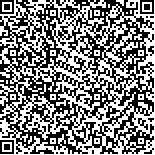| 沈晓燕,李婷婷,童海江.外周血淋巴细胞/单核细胞比值在肝细胞肝癌中的临床意义[J].肿瘤学杂志,2018,24(8):774-778. |
| 外周血淋巴细胞/单核细胞比值在肝细胞肝癌中的临床意义 |
| Ratio of Lymphocyte to Monocyte in Predicting Recurrence of Patients with Hepatocellular Carcinoma |
| 投稿时间:2017-04-13 |
| DOI:10.11735/j.issn.1671-170X.2018.08.B004 |
|
 |
| 中文关键词: 肝细胞肝癌 淋巴细胞 单核细胞 复发 |
| 英文关键词:hepatocellular carcinoma lymphocyte monocyte recurrence |
| 基金项目: |
|
| 摘要点击次数: 2271 |
| 全文下载次数: 591 |
| 中文摘要: |
| 摘 要:[目的] 探讨肝细胞肝癌(hepatocellular carcinoma,HCC)患者切除术前外周血淋巴细胞/单核细胞的比值(lymphocyteand monocyte ratio,LMR)对HCC患者术后复发的影响。[方法] 回顾性分析接受HCC根治性切除术的患者119例,使用X-tile软件估算LMR对于术后复发的最佳决定值,根据该值将119例入组患者分为两组。用Kaplan-Meier法绘制生存曲线,Log-rank检验评估LMR在全部患者人群以及多种低危风险组中的价值。单因素Cox回归模型分析术前各临床参数对于术后复发的影响,有统计学意义的术前单因素进入Cox回归模型进行多因素分析。[结果] 截止2015年7月,119例患者中位随访时间42.30个月,共有56例患者发生复发,占总入组人数的47.06%。X-tile计算得到的最佳切点为4.84,119例入组患者分为LMR≤4.84者72例(60.50%),LMR>4.84者47例(39.50%)。单因素分析显示卫星灶(P=0.032)和术前LMR≤4.84(P=0.004)是术后无瘤生存率的影响因素。多因素分析显示卫星灶和LMR分别是预测术后肿瘤复发的独立危险因子(卫星灶:OR=1.90,95%CI:1.07~3.36,P=0.028;LMR:OR=0.41,95%CI:0.22~0.74,P=0.003)。对AFP阴性(≤400ng/ml)以及BCLC 0+A期的早期肝癌两个低复发风险亚组,LMR依然是一个具有显著意义的复发评估指标(P均<0.05)。LMR与肿瘤的血管侵犯显著相关(P=0.020)。[结论] LMR是一个简便、高效、易检测、低成本的HCC切除术后早期复发预测指标,LMR≤4.84的HCC患者术后早期复发风险显著增加。 |
| 英文摘要: |
| Abstract:[Objective] To investigate the application of the ratio of lymphocyte to monocyte(LMR) in predicting recurrence of patients with hepatocellular carcinoma(HCC) after curative resection. [Methods] The clinical data of 119 patients undergoing curative resection were retrospectively reviewed. X-tile software was used to evaluate the optimal cutoff value for LMR,and the entire cohort of patients were stratified into two groups according to this optimal cutoff value. Difference of recurrence rates between these two groups in entire cohort or low-recurrence-risk subgroups were compared with Kaplan-Meier curves and Log-rank tests. Univariate and multivariate regression analyses were performed to determine the independent predicting factors for tumor recurrence. [Results] The median follow-up time was 42.30 months,and 56 patients encountered recurrence during this period. LMR of 4.84 was set as the optimal cutoff value according to X-tile and patients were stratified into high-risk and low-risk groups based on this value. Univariate regression analysis revealed that satellite lesion(P=0.032) and LMR(P=0.004) were significantly associated with the tumor recurrence. Furthermore,multivariate regression analysis showed that satellite lesion(OR=1.90,95%CI:1.07~3.36,P=0.028) and LMR(OR=0.41,95%CI:0.22~0.74,P=0.003) were the independent indictors for predicting recurrence. LMR retained its prognostic value in low AFP and early-HCC subgroups(all P<0.05). [Conclusion] LMR is a convenient and effective prognostic indicator of recurrence prediction in HCC patients after curative resection,and HCC patients with a LMR≤4.84 have higher risk of tumor recurrence. |
|
在线阅读
查看全文 查看/发表评论 下载PDF阅读器 |